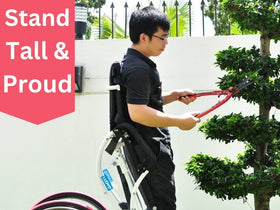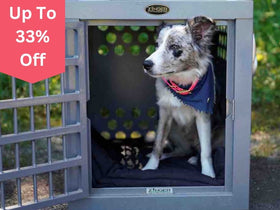
Rear Racks On Bikes: How To Attach One & Benefits
Having a rear rack on a bike can provide several benefits, especially if you frequently use your bicycle for commuting, touring, or carrying various items. Here are some advantages of having a rear rack:
- Cargo Carrying Capacity: Rear racks offer a platform on which you can securely attach bags, panniers, or other cargo carriers. This enables you to transport groceries, work essentials, camping gear, or any other items you might need during your ride.
- Balance & Stability: By mounting the load on the rear of the bike, you can achieve better balance and stability compared to carrying a heavy load on your back or on the front of the bike. This can improve overall control and handling while riding.
- Comfort & Safety: Carrying weight on your bike rather than your body reduces strain on your back, shoulders, and arms. It can also prevent potential accidents caused by the obstruction of rear vision if you were using a large backpack.
- Touring & Long-Distance Rides: For bicycle touring and long rides, rear racks are essential. They allow you to carry camping equipment, spare clothes, and other necessities, making long journeys more convenient and enjoyable.
- Versatility: Rear racks can accommodate different types of cargo, from large items to smaller packages. Many racks come with adjustable features to suit various load sizes.

Attaching a rear rack to a bike can vary slightly depending on the type of bike and rack you have, but here's a general guide:
Materials Needed:
- Rear rack
- Set of screws and bolts (usually provided with the rack)
- Set of Allen keys or wrenches
Instructions:
- Choose The Right Rack: Ensure that the rack you have is compatible with your bike. Different bikes have different mounting points or eyelets that the rack needs to attach to securely.
- Position The Rack: Locate the mounting eyelets on your bike frame. These are usually located near the rear dropouts (where the wheels attach) and on the seat stays (the tubes connecting the rear wheel to the seat tube).
- Align The Rack: Position the rack over the mounting eyelets, ensuring that it is level and centered with the bike frame.
- Attach The Rack: Insert the rack's mounting arms into the mounting eyelets on the frame. Use the provided screws and bolts to secure the rack in place. Tighten the screws evenly on both sides to ensure a stable attachment.
- Check For Stability: Once the rack is attached, give it a gentle shake to ensure it's firmly secured. Make any necessary adjustments if you notice any wobbling.
- Load Cargo: With the rack properly installed, you can now attach bags, panniers, or cargo carriers to the rack and securely fasten them according to the manufacturer's instructions.
If you're unsure about the process or encounter any difficulties, it's always a good idea to consult a professional bike mechanic or visit your local bike shop for assistance. They can ensure the rack is safely and correctly installed on your specific bike model.




